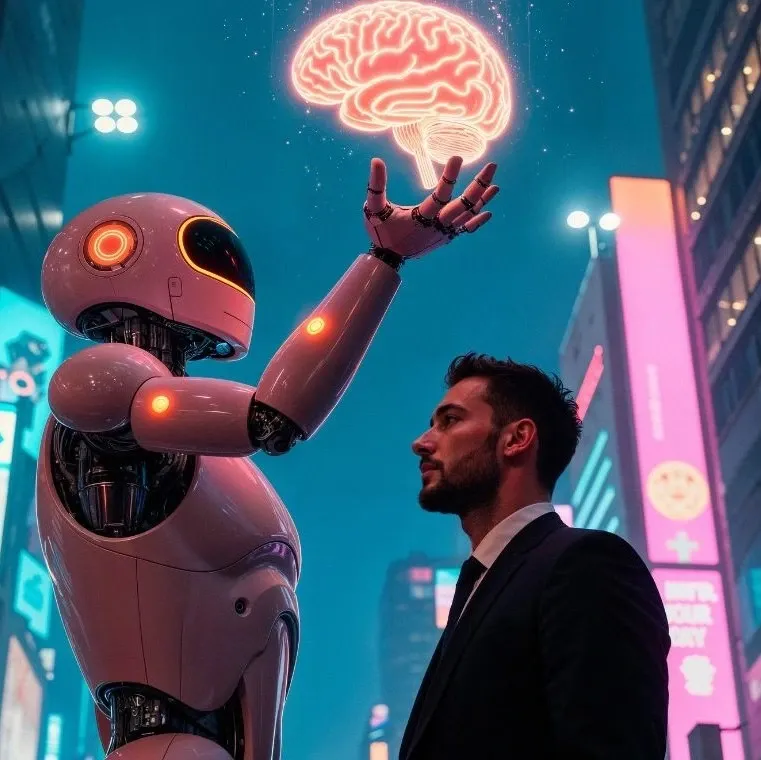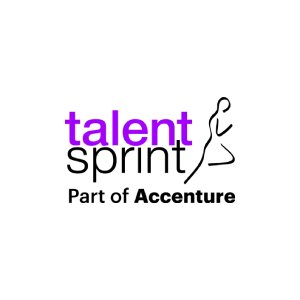How Generative AI Is Redefining Creativity?

Generative AI's creative power transforms how we create and utilize content across various industries. This technology creates life-like images, writes text, composes music, and generates software code. It brings new possibilities to creative work.
Generative AI shapes the future in our digital world. The technology powers AI art and automated writing, standing as one of the century's most influential breakthroughs. Companies and professionals who know how to use generative AI in creative work gain a competitive edge.
Today's generative AI makes creativity more available and diverse than ever before. Building knowledge about AI applications becomes crucial to stay relevant in tomorrow's AI-driven landscape.
Understanding Generative AI and Its Creative Capabilities
Generative artificial intelligence creates new content, unlike traditional AI systems that just analyse and classify data. Generative AI algorithms learn patterns from existing data to produce original outputs that mirror these patterns. This creative ability marks a radical departure from traditional AI systems, which only process information based on preset rules.
Also Read: The Surprising Facts: Will AI Replace Human Jobs or Make New Ones?
What makes GenAI different from other AI?
The difference between traditional and generative AI primarily lies in their underlying mechanisms. Traditional AI excels at automating defined tasks through programming. Generative AI leads creative processes by learning complex patterns without direct instructions. Traditional AI follows strict human-defined guidelines. Generative AI utilizes advanced machine learning to generate new content that often surpasses human creativity.
How does GenAI learn and generate content?
Generative AI models operate through complex neural networks that function similarly to the human brain. These networks process huge amounts of data to identify patterns and connections. To name just one example, see large language models like GPT that are trained on approximately 45 terabytes of text data. This equals a quarter of the Library of Congress and costs several million dollars.
Types of content GenAI can produce
Generative AI shows impressive versatility in creating various types of content:
- Text-based content - Generative AI produces blog posts, marketing copy, creative writing, and technical documentation.
- Visual content - AI generates realistic images from text descriptions, changes existing visuals, and designs original artwork.
- Audio and music - The technology composes original music, creates voiceovers, produces podcast content, and improves audio quality.
- Interactive and multimedia content - Generative AI creates dynamic content like chatbots, virtual shopping assistants, and augmented reality experiences that respond to users in real time.
These capabilities make generative AI a powerful tool that optimises creative workflows across industries. It opens new possibilities for innovation that people couldn't imagine before.
Creativity in the Age of Generative AI
Generative AI tools have altered the map of creative work. These tools offer new ways to express art, create individual-specific experiences, and make creativity available to everyone. What started as experimental tools has now become an essential part of creative work in many industries.
How can Generative AI be used in art and Creativity?
Generative AI works as a partner and spark for artistic innovation. Tools like Midjourney and DALL-E enable artists to create stunning images from text prompts. RunwayML combines several AI features to change existing visuals or create new ones.
AI goes beyond still images. Musicians can utilize AI to create original music. Writers receive AI-generated ideas that inspire new stories. These tools handle basic tasks, such as removing backgrounds, for designers, allowing creators to focus on their art instead of technical work.
Generative AI and human creativity work in perfect harmony. AI doesn't replace human imagination, but rather makes it stronger through a phenomenon researchers call "generative synaesthesia," where human exploration and AI work together seamlessly. This partnership lets artists explore new creative areas.
Personalisation at scale in marketing and design
Generative AI excels at creating individualized experiences on a massive scale. Creating custom content for small groups of consumers used to be too expensive and impractical. Now, brands can develop tailored marketing materials efficiently.
Marketing teams use generative AI to create personalized content "50 times faster than a more manual approach." This speed enables the creation of targeted promotions that resonate with specific consumer groups. These systems learn from marketing data and create better personalised content over time.
Making creativity available to non-experts
Generative AI's most significant impact stems from making creative tools accessible to everyone. These technologies turn complex tools into easy-to-use interfaces. Anyone with an idea can create professional content without special training.
"AI enables individuals to bring new ideas to life, without the need for extensive technical knowledge," according to industry analysis.
The technology "breaks down traditional barriers to entry" with intuitive interfaces that make advanced creative tools available to beginners. Creative expression has expanded beyond traditional gatekeepers, allowing diverse voices to participate in content creation.
Generative AI and Human Creativity: A New Partnership
AI and human creativity work together to create something more powerful than what traditional creative methods can achieve. This partnership between human creators and AI systems demonstrates how creative work has evolved beyond solely human effort to a powerful combination that leverages the strengths of both parties.
AI as a tool for inspiration
AI tools provide creative professionals with fresh ideas and new perspectives. These tools help creators overcome their biggest challenge - the empty canvas.
Generative AI aligns perfectly with creative teamwork due to its collaborative and iterative nature.
"Humans can now collaborate with generative AI in a cycle of drafting, editing, and reworking text, images, music, or videos. The AI can adapt to human feedback in real time, which enables humans to refine their outputs dynamically".
Blending human intuition with machine output
Human instinct and AI capabilities create a perfect match. AI brings computational power, pattern recognition, and quick data processing to the table. Humans contribute intuition, creativity, and critical thinking. Together, they create results that neither could achieve alone.
People's natural ability to understand complex situations helps them catch details that AI might miss. Unlike machines, humans can pick up subtle hints and make creative connections that lead to innovative answers.
Risks and Responsibilities of Generative AI
Generative AI capabilities are advancing rapidly, and we must consider the associated risks. These technologies unlock amazing creative possibilities. But they also bring challenges that we must manage carefully.
1. Deepfakes and misinformation
For example, Cybercriminals are using AI-generated videos and fake Zoom interviews, pretending to be HR representatives from top Indian companies.
So, AI systems should be trained to detect other AI-generated deepfakes and misinformation, helping platforms like YouTube, Instagram, and WhatsApp to flag and reduce harmful content.
2. Intellectual property and authorship
For Example, Indian musicians and screenwriters have raised the alarm over AI tools mimicking their writing styles and musical patterns. Without clear IP protections, AI-generated Bollywood-style songs flood YouTube and music apps, leaving creators in a grey zone.
Therefore, Clear credit or source referencing must be built into AI-generated text, art, music, and code, enabling creators to determine if and how their work has been used.
3. Environmental and social implications
For example, India is witnessing rapid growth in AI-driven data centers in cities such as Mumbai, Hyderabad, and Chennai. While beneficial for tech growth, they consume massive amounts of electricity and water, raising concerns about sustainability.
So, Future generative AI tools must prioritize low-resource, optimized models that require less power to train and run.
What’s Next: The Future of Generative AI and Creativity?
Generative AI continues to grow, and the creative world stands poised for significant changes. Future developments will depend on both technological advances and new rules that shape how these tools evolve and integrate into creative work.
Emerging trends in GenAI tools
Multimodal AI systems lead the next wave of generative creativity by combining various types of content creation on a single platform. These advanced tools seamlessly combine text, image, audio, and video generation. The industry is showing a clear shift toward user-friendly interfaces, where natural interaction is becoming more important than technical details.
The Role of regulation and transparency
Regulatory frameworks for generative AI take shape worldwide. New standards now ask creators to reveal AI-generated content. These rules help maintain the authenticity of creative work and prevent the dissemination of misleading content. Industry leaders also develop ethical guidelines that promote the responsible use of generative technology in creative work.
Preparing the next generation of creators
Schools now teach AI literacy as part of creative programmes. Understanding prompt engineering, model capabilities, and ethical issues will become basic skills for new creators. This shift in education demonstrates how humans and AI collaborate, rather than viewing technology as a replacement for human creativity.
Conclusion
Generative AI leads a profound shift in creative work across industries. We've seen these technologies revolutionise artistic expression, content creation, and business breakthroughs. The blend of human creativity and machine capabilities offers unprecedented opportunities to those who embrace this evolving landscape.
These impressive AI capabilities remain tools rather than replacements for human ingenuity. The best results emerge when AI enhances human creativity rather than replacing it. This partnership helps you break traditional limits while retaining control and purpose that define meaningful, creative work.
The path forward presents both major challenges and opportunities. Ethical issues surrounding deepfakes, intellectual property rights, and environmental impacts require careful consideration. Responsible implementation must strike a balance between breakthroughs and proper governance and transparency. Generative AI courses can help you decode the technology, understand its ethical and artistic nuances, and apply it in ways that evaluate your creative potential.
Businesses and professionals see generative AI as both necessary and strategically valuable. People who become skilled at prompt engineering, model selection, and AI-human processes will lead their fields. Knowing how to employ these tools while critically evaluating their results becomes vital to succeed long-term.
Whether you're an artist, marketer, coder, or entrepreneur, learning the language of AI is essential. The next era of creativity is intelligent, adaptive, and limitless, and it’s waiting for you to co-author it.
Frequently Asked Questions
Q1. How does generative AI enhance creativity?
Generative AI enhances creativity by serving as a powerful tool for inspiration, enabling rapid prototyping of ideas, and streamlining creative workflows. It can generate novel content across various mediums, allowing creators to explore new possibilities and overcome creative blocks.
Q2. Can AI completely replace human creativity?
No, AI cannot completely replace human creativity. While generative AI is a powerful tool, it lacks the human elements of personal experience, emotion, and intuition that are crucial to truly inspiring and meaningful creative work. AI serves best as a collaborative partner, augmenting human creativity rather than replacing it.
Q3. What are some popular generative AI tools for creative professionals?
Popular generative AI tools for creative professionals include DALL-E and Midjourney for image generation, ChatGPT for text creation, RunwayML for video editing, and AIVA for music composition. These tools offer user-friendly interfaces that make sophisticated creative capabilities accessible to both experts and beginners.

TalentSprint
TalentSprint is a leading deep-tech education company. It partners with esteemed academic institutions and global corporations to offer advanced learning programs in deep-tech, management, and emerging technologies. Known for its high-impact programs co-created with think tanks and experts, TalentSprint blends academic expertise with practical industry experience.



